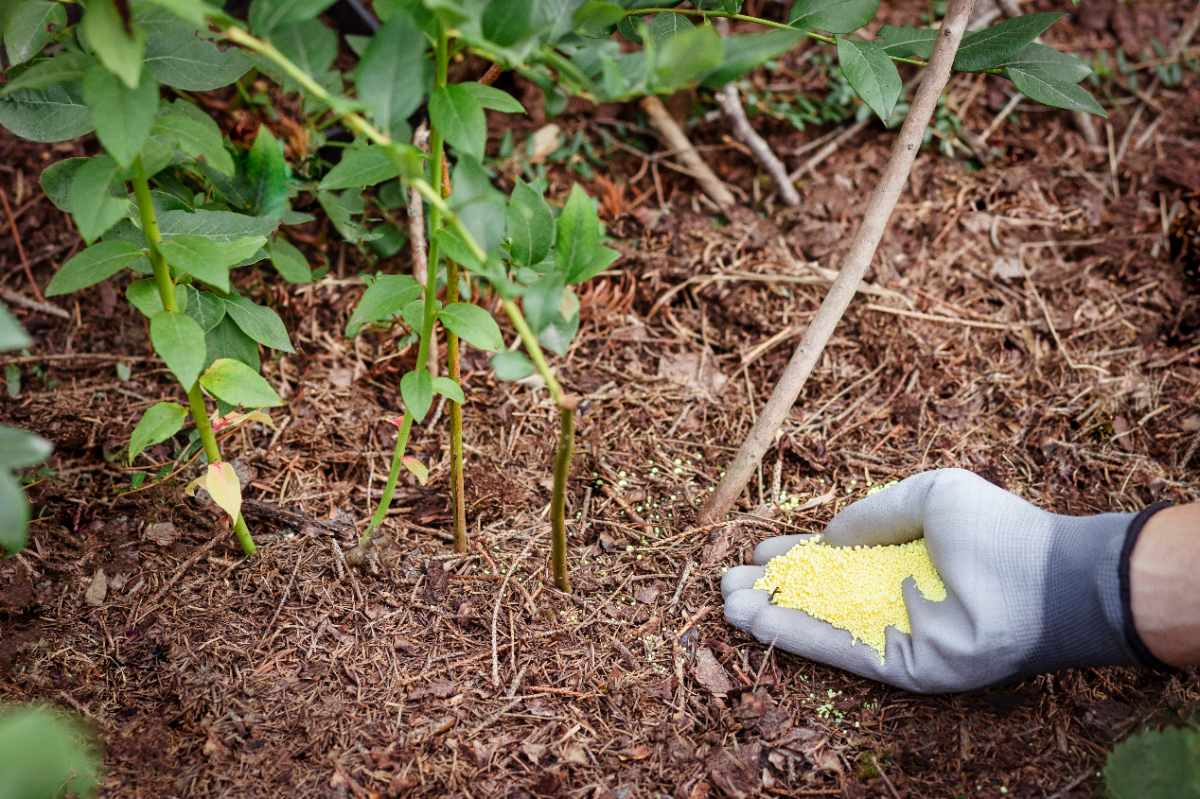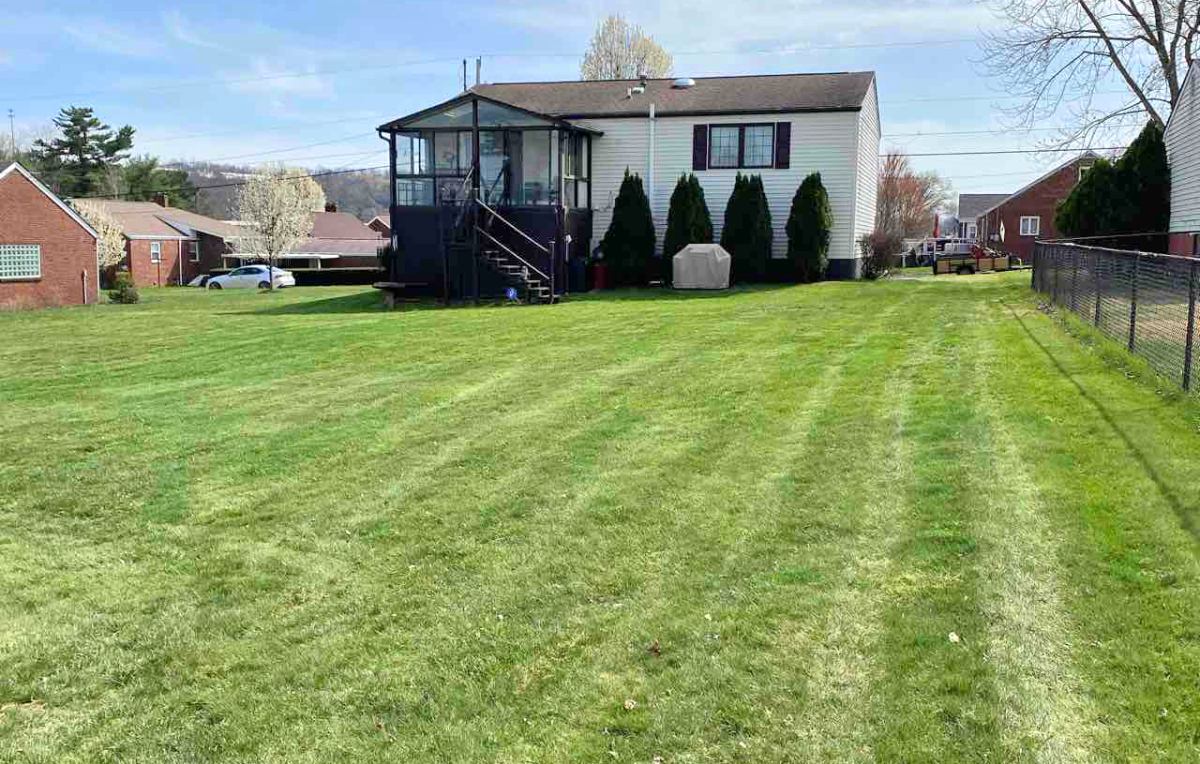
Knowing when to apply sulfur to lawns is key to balancing soil pH. In general, early fall is the ideal time, but late spring offers another window of opportunity if you missed the autumn application.
For optimal results, though, your region plays a big part in determining the specific timeframe for applying sulfur. We’ll walk you through the best times by season and region, as well as when to avoid applying this soil amendment. But if sulfur application isn’t in your comfort zone, consider hiring a pro instead.
Best Times to Apply Sulfur to Your Lawn
The prime window for applying sulfur is early fall. But if you missed this timing, you can still apply the soil acidifier in late spring.
University of Idaho Extension associate professor of horticulture Brad Stokes says that analyzing the soil profile is important before applying sulfur. That’s why you must test the soil pH of your lawn first to check whether the soil is alkaline and needs sulfur to balance its pH level.
Once you’ve concluded that your soil needs sulfur, the next step is to determine the right time to apply it.
Early Fall: The Prime Window
In choosing when to apply sulfur to lawns, you must consider your region, grass type, and weather conditions.
Fall is the ideal season to add sulfur because the soil is still warm enough, but cooler air temperatures put less stress on the lawn.
Northern Regions (Early September to Mid-October)
- Temperature: Early fall temperatures in northern regions are around 60 F to 70 F — perfect for sulfur to break down in the soil without burning the grass.
- Weather conditions: Fall rain carries sulfur deeper into the soil and accelerates pH changes, while avoiding the risk of summer evaporation.
- Climate: It’s still warm during this time, so sulfur is still effective in lowering soil pH.
- Grass type: Cool-season grasses are actively growing, making them strong enough to handle soil acidifiers like elemental sulfur.
Southern Regions (Late September to Early November)
- Temperature: Warm-season grasses in southern regions benefit from sulfur application when temperatures drop from the summer heat into the 70s.
- Climate: A milder fall climate means sulfur can keep reacting in the soil longer before grasses go dormant.
- Weather conditions: Seasonal rainfall allows sulfur fertilizers to move through sandy or loamy southern soils.
- Grass type: Warm-season grasses are not dormant yet, so applying sulfur at this time is still effective in the South.
Central Regions (Early to Mid-October)
- Temperature: Early to mid-October brings just the right soil warmth for sulfur application in central states.
- Climate: Soil temperatures are declining, but still warm enough for sulfur oxidation.
- Weather conditions: Moderate rainfall, typical in early October, aids sulfur absorption without oversaturating soils.
- Grass type: Lawns in the central U.S. can be warm-season like Bermudagrass or cool-season like tall fescue, and sulfur can support both types before colder weather sets in.
See Related: How to Choose the Right Grass for Your Lawn
Late Spring: The Secondary Option
If you miss the fall window, late spring is the next best time. By now, soils have warmed up, and your lawn is exiting dormancy, providing sulfur with ample opportunity to balance the soil pH and support healthy growth.
Northern Regions (March to Early April)
- Temperature: By late spring, northern soils are consistently above 60 F, providing sulfur with the warmth it needs to activate.
- Climate: Mild late spring weather allows grass to tolerate treatments before summer heat ramps up.
- Weather conditions: Consistent rainfall during this period helps sulfur soak in evenly without the risk of drying out.
- Grass type: Cool-season grasses like Kentucky bluegrass are still actively growing, making them strong enough to handle pH adjustments with soil sulfur.
Southern Regions (Late April to Early May)
- Temperature: Southern soils are in the 70s by late spring, allowing sulfur to react quickly without the intense stress of midsummer heat.
- Climate: The South’s longer spring gives sulfur more time to work before hot, dry conditions set in.
- Weather conditions: Late spring rains can carry sulfur down to the root zone, preventing it from sitting on the surface.
- Grass type: Warm-season grasses like Zoysiagrass are in peak growth mode, making sulfur for lawn applications especially effective now. Since warm temperatures drive growth, these grasses, according to Stokes, “have a distinct curve that starts in late spring.”
Central Regions (Late March to Early April)
- Temperature: With soil warming gradually, this period allows sulfur to break down at just the right pace.
- Climate: The mix of cool and warm-season grasses in transitional zones benefits from this timing before the weather swings hotter.
- Weather conditions: Consistent late spring rainfall ensures sulfur penetrates the soil properly, especially if liquid sulfur fertilizer is applied.
- Grass type: Both warm-season and cool-season grasses benefit as each type is actively growing at this time.
See Related:
When Not to Apply Sulfur
Applying sulfur at the wrong time can cause more harm than good. Here are the key times you’ll want to avoid:
- Midsummer: The heat can amplify sulfur’s acidity, which can burn your grass and stress soil microbes. Using granulated sulfur during this time is even more risky since it reacts in hot conditions.
- Late fall/winter: Cold soils stop the sulfur reaction, making application useless until spring comes.
- On frozen ground: Applying on frozen soil means sulfur will wash away when the snow melts, so you’ll just end up wasting the product.
- Between seasons: High temperatures in the summer months can cause sulfur to burn plants, while too much moisture or lack of it can make the application ineffective.
- During drought: Without water, sulfur just sits on the soil surface and can damage the grassroots. While it shouldn’t be a big issue with liquid application, “products could be delayed in being broken down if it is a granular type,” warns Stokes.
In an experiment by the University of Florida IFAS Extension, applying water-dispersible elemental sulfur to sandy soil at 50 pounds/acre lowered the soil pH from 7.2 to 6.1 in 4 weeks — whereas using granular elemental sulfur in the same setup and timeframe produced no measurable change.
FAQ About the Best Time to Apply Sulfur
No, you should avoid applying sulfur and fertilizer at the same time. Adjust your soil pH with sulfur first, and once it’s stabilized, you can then fertilize.
Most lawns only need sulfur once a year, but it’ll still depend on your soil test results.
Yes. While synthetic sulfur works faster, it can be harsher on soil microorganisms. On the other hand, organic (elemental sulfur) works gradually to lower soil pH, but it’s more eco-friendly.
Sulfur can last around 1 to 3 years, depending on the type of sulfur, soil type, and amount of rainfall.
Apply Sulfur to Your Lawn the Right Way

Applying sulfur at the right time can help balance the pH of your soil and maintain your lawn’s health. Timing is everything — whether you do it in early fall or late spring. But if you find soil treatment overwhelming, there’s no shame in getting help from a local lawn treatment pro.
Sources:
- “Adjusting Soil pH in the Garden.” University of California Agriculture and Natural Resources.
- Brad Stokes, associate professor of horticulture at the University of Idaho Extension. Personal interview.
- “Changing pH in Soil.” By Paul Vossen, farm advisor. University of California Cooperative Extension.
- “Do Garden Soils Need Limestone or Sulfur?” By Bruce Spangenberg, horticulture outreach specialist. University of Wisconsin-Madison Extension.
- “Fertilizing Lawns.” By Tom Cook, emeritus professor, and Brian McDonald, senior faculty research assistant. Oregon State University Extension.
- “Sulfur Amendments to Lower Soil pH.” By Phillip Williams, assistant professor. Southwest Florida Research and Education Center.
Main Image: Gardener adding sulfur granules to soil. Image Credit: Maryana / Adobe Stock